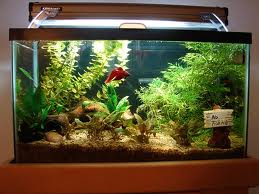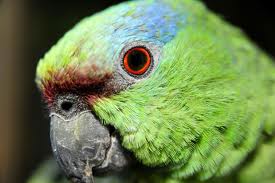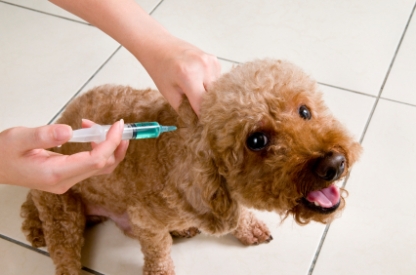 For too long exposure to cold on the body heat loss compensation is broken. In fish, both cold-blooded animals with falling ambient temperature decreases and body temperature. At the same time inhibited the function of the midbrain (cold anesthesia), and then suppressed by the hypothalamus and other centers of the central nervous system, blood pressure falls, breathing movements gill covers are rare. There is hypoglycemia, ie, decreases the amount of sugar in the blood. The central nervous system is particularly sensitive to the lack of sugar, as it has no glycogen. During prolonged hypoglycemia in nerve cells, irreversible changes. With a deep and prolonged hypothermia decreases the intensity and nature of the changes of metabolism – manifested, for example, anaerobic glycolysis, which goes to the autolysis and death comes first individual cells, and then the whole body.
For too long exposure to cold on the body heat loss compensation is broken. In fish, both cold-blooded animals with falling ambient temperature decreases and body temperature. At the same time inhibited the function of the midbrain (cold anesthesia), and then suppressed by the hypothalamus and other centers of the central nervous system, blood pressure falls, breathing movements gill covers are rare. There is hypoglycemia, ie, decreases the amount of sugar in the blood. The central nervous system is particularly sensitive to the lack of sugar, as it has no glycogen. During prolonged hypoglycemia in nerve cells, irreversible changes. With a deep and prolonged hypothermia decreases the intensity and nature of the changes of metabolism – manifested, for example, anaerobic glycolysis, which goes to the autolysis and death comes first individual cells, and then the whole body.
Resistance to the cooling depends on the state (the total resistance, fatness, age, etc.).The main cause of death of the organism from prolonged hypothermia is considered to tissue hypoxia and irreversible changes in the nervous system. Fish can live for a long time without food, but can not tolerate oxygen deprivation, even for a short period (from several minutes to several hours). In some cases, even in nature there are cases of mass death of fish with a sharp and significant reduction in water temperature (for a day or two), and the reason it is not the freezing of tissue fluid and the cooling of the protoplasm, a violation of the reactivity of the protein, leading to a profound disturbance of metabolism.
Gradual changes in temperature are rarely a threat to the health and lives of fish, while the sharp fluctuations can cause severe stress, resulting in significantly reduced fish resistance to disease. Temperature shock syndrome is well known, and should be avoided. Translate fish from one setting to another should be gradual, so that the temperature difference does not exceed 3-5 ° C.
Temperature not only affects the functioning of the body of fish, but also affects the occurrence of disease may contribute to the development of parasites. It is known that some infectious diseases of fish occur in the relatively cold water (10-12 ° C), the other most urgent occur at higher temperatures (20-25 ° C) – here are aeromonosis (rubella), inflammation of the swim bladder other. At low water temperatures the fish are suspended or slowed physiological functions of the body, breaks down the nervous system, respiration, circulation, and the formation of blood clots inside the blood vessels in and out, damaged gill apparatus.
Too high water temperature also causes disruption of the body of fish. Thus, even for short periods of high temperature “fired” gill lobes, and the skin appears whitish intense mucosal plaque. Gill petals fish become anemic, covered with slime, there is a rupture of the capillaries, there is bleeding. After some time, is necrotic decay and complete destruction of the gill filaments. On the gills of the affected areas settled saprophytic fungi and bacteria develops the disease process, and there is a fish kill.
Exposure to high temperatures in the presence of other unfavorable factors (especially the accumulation of water in the tank of a large amount of organic matter, high content of ammonia, etc.) causes an outbreak branhiomikoza. At high water temperatures dramatically exacerbated during aeromonosis (rubella) and swim bladder inflammation, accompanied by mass mortality of fish. In addition, depending on the temperature of the water appear a number of pathogens associated diseases. During the above-mentioned infectious diseases is complicated by the massive development of Ichthyophthirius, Dactylogyrus, and other agents of invasive disease. Some of these parasites are cold-loving, others – heat-loving. So, Costia necatris preferred temperature 10-22 ° C, Ichthyophthirius – 20-26 ° C, Dactylogyrus vestator – 24-28 ° C. At these temperatures, there are outbreaks of epizootic diseases of the: kostioza, ihtioftirioza, dactylogyrosis. All these temperature zones are safe, secure oxygen, carbon dioxide poor water with neutral reaction (pH = 7,0-7,1).
With the deterioration of environmental conditions decreasing the stability of the fish as too high and to very low temperatures. It should also be remembered that with increase in temperature increases the toxicity to fish and other aquatic organisms most chemicals.
From the above it follows that the temperature of water is an essential life-sustaining factor in the aquarium, which is the correct use can avoid a lot of trouble for their pets.
 Conjunctivitis – an inflammation of the conjunctiva – a transparent mucous membrane connecting the eye that covers the rear surface of the eyelids and front of the eye to the cornea.
Conjunctivitis – an inflammation of the conjunctiva – a transparent mucous membrane connecting the eye that covers the rear surface of the eyelids and front of the eye to the cornea.

You must be logged in to post a comment.